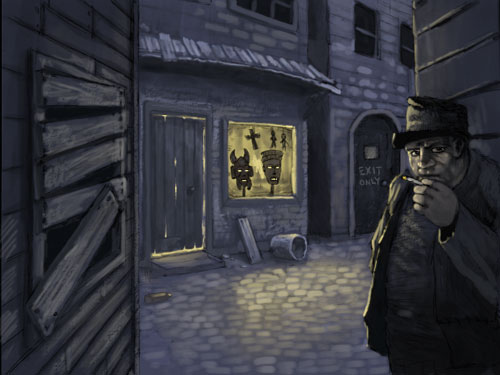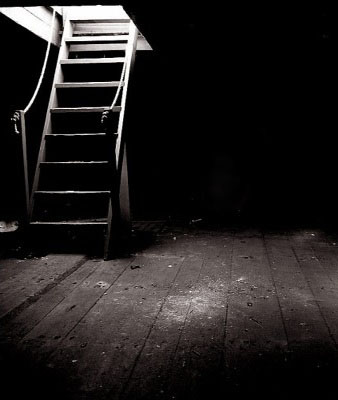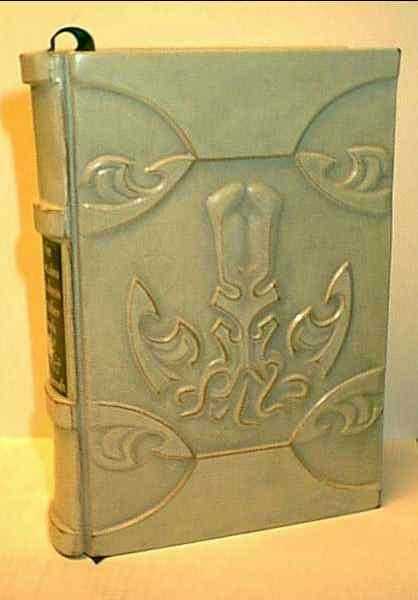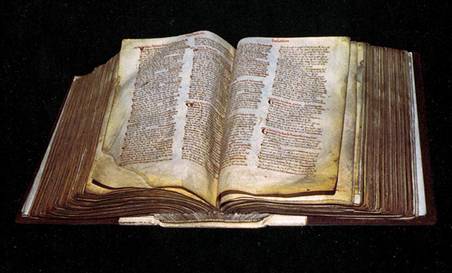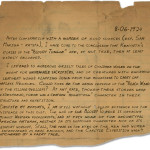(From the journal of Dr. Lawrence Wentworth Stafford, dated 23.1.1925)
I had received a telegram from Edward Gavigan, the head of the Penhew Foundation. He wrote, that he had only met Jackson Elias once, but had a wealth of material from him at his possession, including artifacts and notes about the Carlyle expedition. The material was in London, so Matthew Griswold asked Billy to acquire us tickets to the next ship over. In the evening, we came to a conclusion about publishing rights about the journey and all it uncovered. Griswold retained rights to popular culture publishing, while Dr. Paynesworth, Dr. Jusupov and me held the rights to academic papers. We also decided that because of him being the eldest of us, professor Paynesworth would act as our spokesperson toward the press as well as the leader of our own expedition. I was to be his second because of my field and traveling experience.
The funeral of late Mr. Jackson was held the next day, wednesday 21.1.1925. It was a short, but a warm occasion. Reverend Lawrence T. O’Dell from the Seamen’s Mission held the service, and some of Jackson’s friends were there too – Jonah Kensington, his publisher; Colonel Fawcett; Harkov, an antiquarian; Brinden, a reporter; Exton, a watchmaker. During the service a scruffy man in his twenties sat down in the back row. While Mr. Calvin Borel asked him to join our conversation after the service, he stuttered that he was waiting for the next funeral – though there weren’t any coming that day – and walked out. Mr. Borel followed him, and he ran away, to a car with two men waiting, and it sped away from the church. A most peculiar incident, I dare say.
The wake was held at Griswold’s aparment, and some sandwich cakes were served, with beverages. After the wake, we signed our formal work contracts, and settled on our wages ($2000 to the expedition leader, $1800 to me, and $200 to the gentlemen Borel, O’Flannagan and Walker). Our deal on the publishing was revisited and signed, and we agreed on publishing our findings at the same time – if there were no publications from the other party, there would be a waiting period of three years after the expedition conclusion, after which the other party could freely publish their work.
I was bothered by the story of visiting the Juju House, where Mr. O’Flannagan, Walker and Borel had visited, and told us they thought there was still something amiss there. I tried to talk Dr. Paynesworth into coming there with me, but he was too occupied with one of the books from Carlyle’s safe, and declined. Dr. Jusupov had disappeared somewhere, but at least Mr. Borel, Walker and O’Flannagan accompanied me to the store, though they stayed outside the shop.
Inside, I bought a wooden Kenyan mask for a fair price of $1.80 from Mr. Silas N’Kwane, while two black men were measuring me up, trying to decide if I was worth mugging. Outside, Mr. Walker suddenly spotted the scruffy young man from the church, and dashed after him – the baffled Mr. O’Flannagan shortly followed him, unsure of why he was running in the first place. When I exited the shop, Mr. Borel informed me of the events, and we too hurried after the men.
O’Flannagan and Walker had managed to stop the man, and explained that he had tripped and hurt his head. I was a bit suspicious of this fortunate flow of events seeing a bloody brass knuckes on O’Flannagan’s fists, but after hearing the man, Justin Ashbrook, talk, I forgot about them quickly. The man told us that he and a man named Adale had received orders from a man named Mugugga to spy on the church and inform him about the people attending poor Mr. Jackson’s funeral. He also confessed his guilt to murders and even knew about the dark group called Bloody Tongue, who were guilty of carving their victims forehead with strange markings. Ashbrook told us taht Mugagga was a priest of some sort, and guilty of murdering Eliah Johnson in lieu of others. He told us, that they were capturing men to be sent to the basement of the JuJu House, into the pit.
We hailed a taxi, and drove to an acquaintance of Mr. O’Flannagan, who was a doctor of sorts, and could take care of Ashbrook. Or at least that’s what I was told, and left outside with my pipe, while the other gentlemen escorted the poor man inside the building. We returned to our residence to find Dr. Paynesworth seemingly distraught after having finished his book, Life as a God. He had nothing good to be said about the book, and had even tried to calm his nerves with a glass of cognac, a clear sign that he was visibly shaken.
Together, we decided to wait a few hours, then visit the JuJu House again. Billy joined us as our chauffeur, and the gentlemen took some equipment with them, and armed themselves. The locks on the back door were helpless against the brawn of Mr. Walker and O’Flannagan, as well as the lock on the hatch found inside the shop, behind the counter. Dr. Paynesworth discovered the missing book, Dark Sects of Africa, under the counter too – the book that was stolen from Harvard University! We were clearly catching up on our killers!
What followed next is not something I have a clear picture of, and cannot explain it in any logical or rational manner. We walked down a ladder, then some stone steps, to find a room built for some kind of sacrifices, with occult markings on the walls and floor, drums strewn about, a carved stone lid on a well on the floor and a curtain separating a smaller alcove from the room. There were winches to raise and lower the stone slab, and Mr. Walker and Mr. O’Flannagan manned these. Dr. Paynesworth drew the curtains aside and saw an altar of sorts, with book and daggers and what not on it. There were two corpses of men, chained to the wall on both sides of the altar.
I’m not sure if the next happened for real of if it was just my feverish imagination or a waking nightmare – while raising the stone slab, something started to whine and moan in the pit, the corpses came alive and bit Dr. Paynesworth, and someone threw the body of Billy down the steps at us in the corridor. Soon the room was a mess of melee, shots fired and horrified yelling. I think I shot a negro or two, saving the life of Mr. Borel; Dr.Paynesworth escaped the undead corpses intent on feeding on him and not stopping on his remarkable display of swordsmanship, until the fists of Mr. Walker and Mr. O’Flannagan stopped them. Billy waked up to the sounds of gunfire, beaten but otherwise unharmed.
This did not stop the thing within the pit though. It threw itself towards the stone slab, which must’ve weighed a metric ton or more, almost able to move it aside and escape. That’s what we decided to do, grabbed our flashlights and ran to our car, and drove away. Billy said he would tip the police anonymously about the shop and the shots fired in there, while the rest of us were allowed to take a bath and a stiff drink to calm our nerves. The sleep did not come easy, and we all woke up to the friday morning after a night of nightmares behind us.


